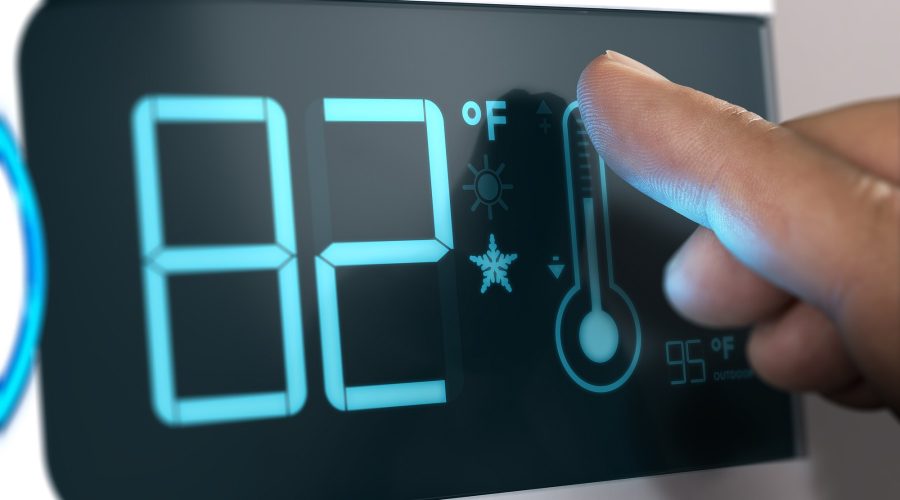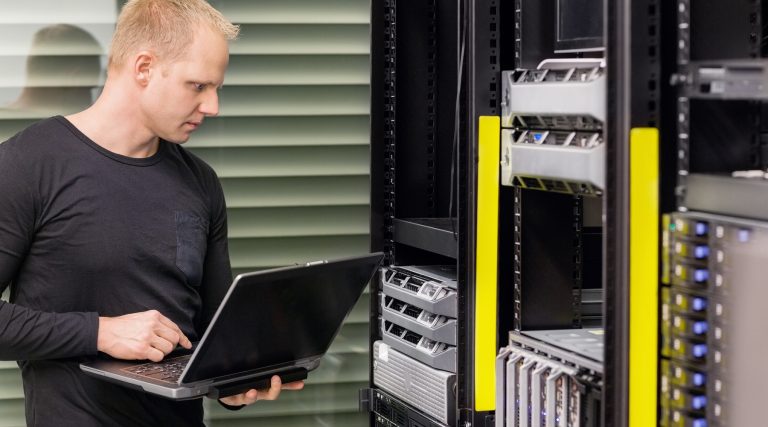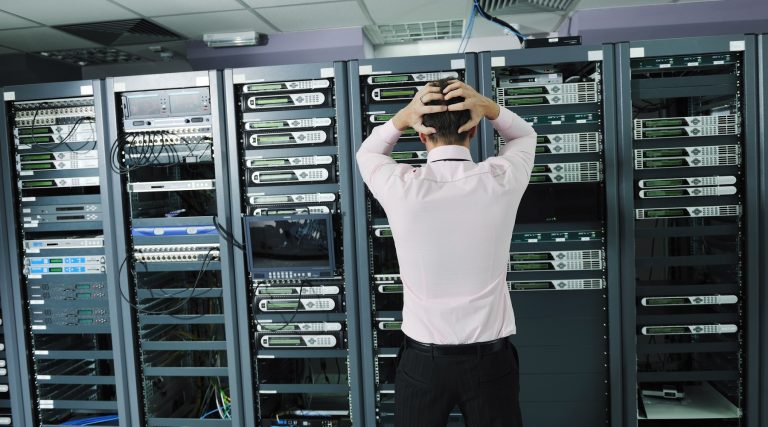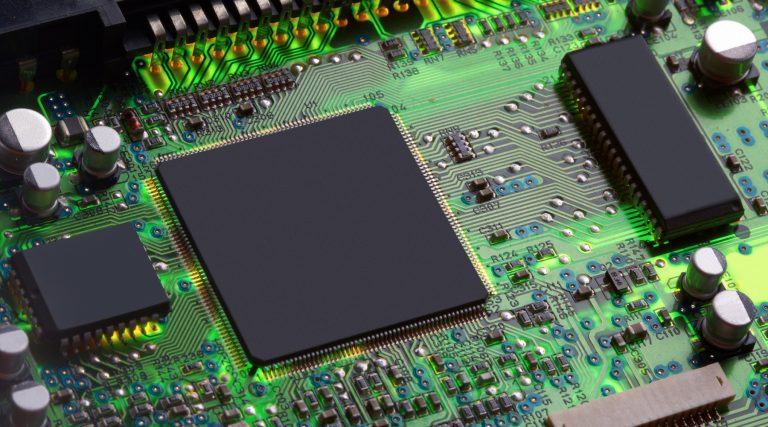How Data Center Free Cooling Works and Why it is Brilliant
The best things in life are free. A lot of the important stuff, however, is not. And it’s all the more painful when we realize we’re paying for something we could have gotten for free. The free cooling of data centers is practically free. And paying for a standard compressor-based cooling seems really unnecessary in comparison. But let’s take it from the top: Cooling is key. Without it, IBM data centers in north Italy would be as hot as pizza ovens in the company cafeteria. But how can you keep the servers from burning and not bankrupt your company in the process? With a technology called free cooling.

When we talk about computers, heat and high temperatures are considered undesirable. Most computer components produce heat and need to get rid of it quickly, so that their performance doesn’t drop or so that the components don’t get damaged. CPUs can get fried with their own heat, so do GPUs, and there’s even an optimal temperature window for hard drives. Cooling is just really important for computers. And the same thing applies to data centers, only on a bigger scale.
A lot of power means a lot of heat
Data centers move the internet, but for a price. Literally. Their operations get rather expensive. And that’s especially because of their power requirements – larger data centers can demand almost a fifth of the output of a conventional coal power plant. The equipment of data centers gets so similar to that used in energy production that Google recently decided to build a data center actually in the soon-to-be-closed Alabama power plant.
A lot of heat is created by data centers every day. Their servers are under load frequently and as such they emit a lot of heat that needs to be taken care of. Server cooling has been, until recently, ruled by compressor-based cooling systems. Those however need a lot of energy and because of that get expensive fast. The operational budget quickly adds up in larger data centers – the costs of energy and cooling can even get higher than the costs of the equipment they support.
Every technological process that takes a bite out of that huge pie of costs is worth its weight in gold.
Enter free cooling.
If you’re hot, get out of the data center
The principles of free cooling are remarkably simple. You just need to understand two processes.
The ‘classic way’ of compressor cooling uses the same air over and over. Cold air is moved to servers where it absorbs their heat and is then rushed out by fans, cooled by compressors and then returned to the servers again. And so on and on.
Free cooling changes the equation a bit. Once the air gets hot near the servers, it’s let out into the environment (entirely or in parts) and new, cooler air from the outside is led into its place. In many places of the world, the outside air is for most of the year in fact cooler than the temperatures inside a data center. Thus you don’t need to cool the hot air in compressors, which means that the whole process just got rid of its most energy-consuming part. That’s why free cooling is taking the world of data centers by storm and is very quickly becoming the new norm.
The reason for change? Savings
The advantages of free cooling are clear. Thanks to the use of outside air, there’s no need to cool the hot air. You just let go of it. Which saves a lot of energy and money. In turn, data center providers can offer their services cheaper. And thanks to lower energy consumption, free cooling is also the greener, more eco-responsible choice.
Free cooling should be considered wisely
Lower operational costs of free cooling are to some degree offset by the need for a comprehensive planning stage. Both the location and the execution must be carefully considered. For example, free cooling needs free space for the equipment on the roof of the building. That means it’s best utilized when building a brand new data center, where such requirements can be considered beforehand.
Keep it cool with hot air
While free cooling may seem like the absolute messiah of data center cooling, in reality it’s not without its problems. One factor in particular stands out.
The temperature. The air flowing around the server hardware in compressor-based cooling systems is usually chilled to around 20-25 degrees Celsius. Such a low temperature is not possible for free cooling to maintain in many places of the world for a whole year. In such cases, free cooling is used only as the auxiliary cooling method. That, however, limits the savings of energy and budget.
One possible solution could be to raise the temperature of the inlet air. Even as high as 35 degrees Celsius.
What would be a really sharp temperature difference for humans is, according to several studies, okay for hardware. It can perform well in these temperatures without suffering lower reliability or higher failure rates.
This topic has been thoroughly explored by the experts from the hardware web AnandTech. They have found that even a high-end powerful twelve-core beast of a processor still stays in the temperature range allowed by the manufacturer. Even when running cooled by inlet air as hot as 40 degrees Celsius. So at twice the normal temperatures.
How AnandTech conducted its tests
The guys from AnandTech used a 2U server Supermicro 6027R-73DARF with two Xeon CPUs with different TDP (i.e. the value of thermal energy it emits in normal use). Specifically, they used the high performance E5-2697 v2 (that is also the “warmer” of the two, at 130 W TDP) and the somewhat less powerful E5-2650L v2 (the “colder” one, at 70 W TDP). The server has been PUE optimized, which means that it’s supposed to be highly energy-effective. In reality, it “just” has a very effective PSU (power source) and a layout that doesn’t inhibit the airflow even when the server is fully loaded with components. This server has been placed into a “hot box” that the journalists kept warm at specified temperatures, thus creating a situation similar to a hot data center.
The performance practically hasn’t changed, even when the system has been subjected to higher temperatures. The projected savings, however, were extraordinary. Even though the server fans had to work a bit more in the hotter environment (and as such used a tiny bit more energy), this solution still ran much cheaper than a usual compressor-based cooling system would. The journalists from AnandTech estimated that raising the temperature from 20 to 35 degrees Celsius raises the energy requirements of the system only marginally, while saving the data center about 40 % of cooling costs.
The experts down at Intel have conducted a similar experiment, only on a much larger scale – they tormented around 900 blade servers in higher temperatures – and they were even more optimistic about their results. According to them, changing their data center to free cooling and raising the operational temperatures would save their data center up to 67 % of cooling costs. And for 10 MW data center this means saving about 2.87 million dollars each year.
There are over 3 million data centers just in the US.
What about the hardware though? Won’t the higher temperatures shorten its life? According to the Intel study and several others, the answer is: Not particularly. The experts at Intel didn’t note any consistent failure rate rise.
What about the future?
Free cooling is fairly new to data center cooling. It very quickly gains ground though and the world’s biggest data center owners the likes of Google, Facebook or Microsoft have now been building new data centers just with free cooling for a while now. Even though it still has its uses, the old compressor-based cooling is just not as cost-effective, so I suspect that free cooling will continue to push it out of the market in the coming years.
In the future we might witness several new approaches to cooling, mainly based on specially manufactured materials. Just last year, the scientists from the Stanford University developed a material that in direct sun cools itself well under the ambient temperature levels by emitting thermal energy without actually using any electrical energy whatsoever. Even more recently a different science team from Lousiana described a cooling principle based on a material that changes its temperature when subjected to different magnetic fields and as such could potentially change the world of cooling completely. For now, these new approaches are only in the prototype phase, so we’ll have to wait for a while before they’re actually manufactured and used in data center equipment. Until then, free cooling will continue to reign as the unequalled king of effectiveness and price.
We’re already using free cooling here at Master DC. We’ll show you how it looks in use soon in another post on this blog. And we’ll also explain the difference between direct and indirect free cooling. Join the subscribers now through the button at the top of the page! You will be noticed about new posts by an email and will get to read new articles first.



